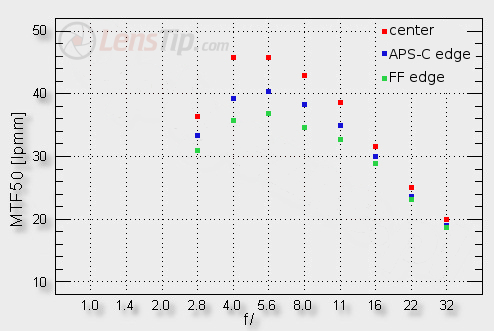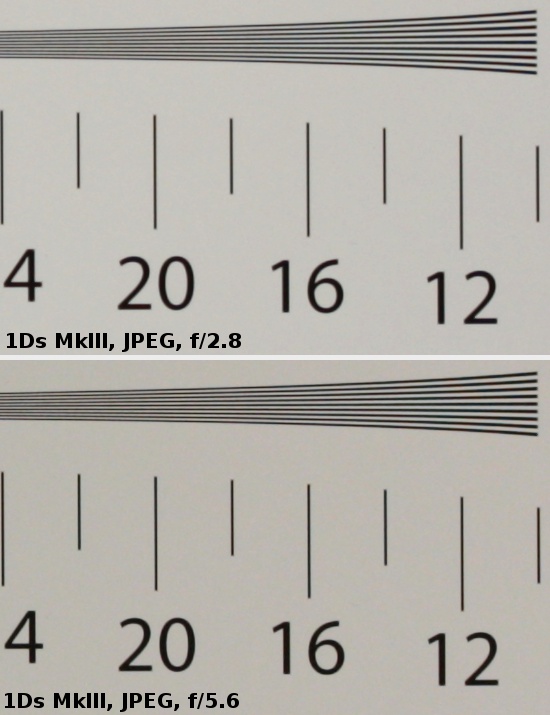Tamron SP 90 mm f/2.8 Di MACRO 1:1 VC USD
4. Image resolution
The results of the tested lens are easily comparable with those of the Canon EF 100 mm f/2.8L IS USM and the Sigma 105 mm f/2.8 EX DG OS HSM Macro as both these instruments were tested on the same body. You can also compare them easily to the older Tamron version which was tested on the EOS 20D, featuring the same pixel density as the 1Ds MkIII. The Nikkor 2.8/105 VR was tested on the Nikon D3x and here there will be no problems with the comparison as well because the D3x and 1Ds MkIII provide very similar MTF values if you attach to them the same lenses.
Let’s glance at a graph below to assess how the tested Tamron 2.8/90 VC fares here.
Please Support UsIf you enjoy our reviews and articles, and you want us to continue our work please, support our website by donating through PayPal. The funds are going to be used for paying our editorial team, renting servers, and equipping our testing studio; only that way we will be able to continue providing you interesting content for free. |
- - - - - - - - - - - - - - - - - - - - - - - - - - - - - - - - - - - - - - - - - - - - - - - -

The performance in the frame centre can be described only in superlatives. Already at the maximum relative aperture the image is of very high quality and on slight stopping down it becomes outstandingly sharp. By f/4.0 and f/5.6 the MTFs reach a very high level of 46 lpmm.
The chart below compares the performance of the Tamron and its rivals in the frame centre ( we put together the maximum results these instruments got and their performance at the maximum relative aperture). It allows us to assess how the tested lens fares in comparison with other lenses of this class.
| |
Tamron 2.8/90 VC |
Tamron 2.8/90 |
Canon 2.8/100L IS |
Nikkor 2.8/105 VR |
Sigma 2.8/105 OS |
| f/2.8 |
36.1 |
29.1 |
43.7 |
40.0 |
36.2 |
| Max |
45.9 |
43.0 |
46.2 |
44.6 |
43.4 |
The first thing that sticks out is a significant improvement compared to its predecessor. When it comes to the maximum relative aperture the Tamron gets an identical result as the rival Sigma – both these lenses have to admit their defeat in this category as their brand name rivals are better.
The situation changes a bit when you look at the maximum achievements. Here the Sigma and the Nikkor lag behind a bit for a change and the first place is awarded joint to the Canon and the Tamron.
When it comes to the performance on the edge of the frame we don’t have any reservations here. At the most demanding combination of maximum relative aperture and the edge of full frame the image is still useful. On slight stopping down it becomes of good quality on the edge of the frame (regardless of the size of the detector).
At the end of this chapter we present crops of our resolution testing chart which were taken from JPEG files (saved at the lowest sharpening level).
 |






